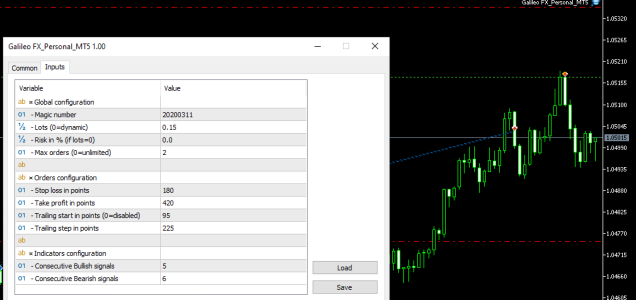mikegillespie07
New member
Hi,
Can you help me understand why the trailing stop didn't trigger in this trade? This is the second trade a row where it didn't trigger. Galileo went short at 1.05170. Red arrow - 7 candles in from the right edge. You can see the initial stop lost at 1.05350 (225 points per strategy) at the top. I would expect the trailing stop to trigger when price reached 1.05075 (95 points lower - per strategy) and set a trailing stop at 1.05300 (225 + 1.05075) but it didn't. The low on the down candle 4 in from the right is 1.04940. What am I missing in order to get the trailing stop to trigger? Thanks!

Can you help me understand why the trailing stop didn't trigger in this trade? This is the second trade a row where it didn't trigger. Galileo went short at 1.05170. Red arrow - 7 candles in from the right edge. You can see the initial stop lost at 1.05350 (225 points per strategy) at the top. I would expect the trailing stop to trigger when price reached 1.05075 (95 points lower - per strategy) and set a trailing stop at 1.05300 (225 + 1.05075) but it didn't. The low on the down candle 4 in from the right is 1.04940. What am I missing in order to get the trailing stop to trigger? Thanks!

